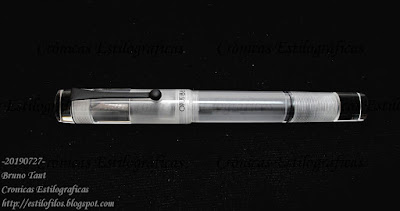The Pelikan Hub, 2019 edition, is over and it is time to think what that event is and what it means.
I am not particularly interested on Pelikan and on the endless rehash of models this company practices nowadays. I also tend to look at these promotional events from a healthy distance. But on this occasion the local pen community made it more appealing. And last week I attended my first Pelikan Hub. That was in Tokyo.
So, what are these events?
In May each year since 2014, Pelikan open a call to pen aficionados for them to meet on a day in September. Then, Pelikan chooses a hub master –the organizer of each event in every city--, prints some promotional material like leaflets and banners, provides some inkwells and... Well, that is all.
The rest is up to the local hub master and to the attendees. In Tokyo, we paid to rent the space. And at the event, we received the promotional material, which includes an inkwell (Star Ruby this year), and spoke about pens –not only Pelikan--, and about inks. And at the same time we mention the meeting on social media and other means of online communication.
So, we become the tools of advertisement for Pelikan. And almost for free—what is the actual cost of the whole operation for Pelikan? How much is that cost per person attending the hubs? How much does an inkwell cost to Pelikan?
We attendees became tools, very inexpensive tools. And we even pay to meet! In the old Spanish expression, “encima de burros, apaleados”.
The good part? Meeting other pen aficionados. But we do not need Pelikan to do so.
Pilot Vpen – Bril Turquoise Blue
Bruno Taut
Kunitachi, September 27th 2019
etiquetas: redes sociales, Pelikan, Tokyo
Bruno Taut
Kunitachi, September 27th 2019
etiquetas: redes sociales, Pelikan, Tokyo









































